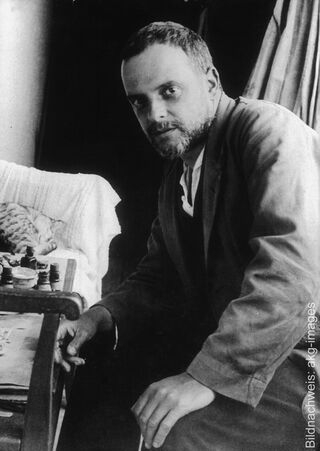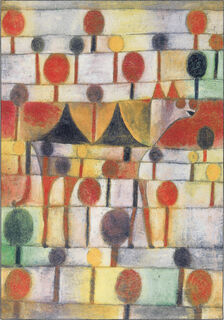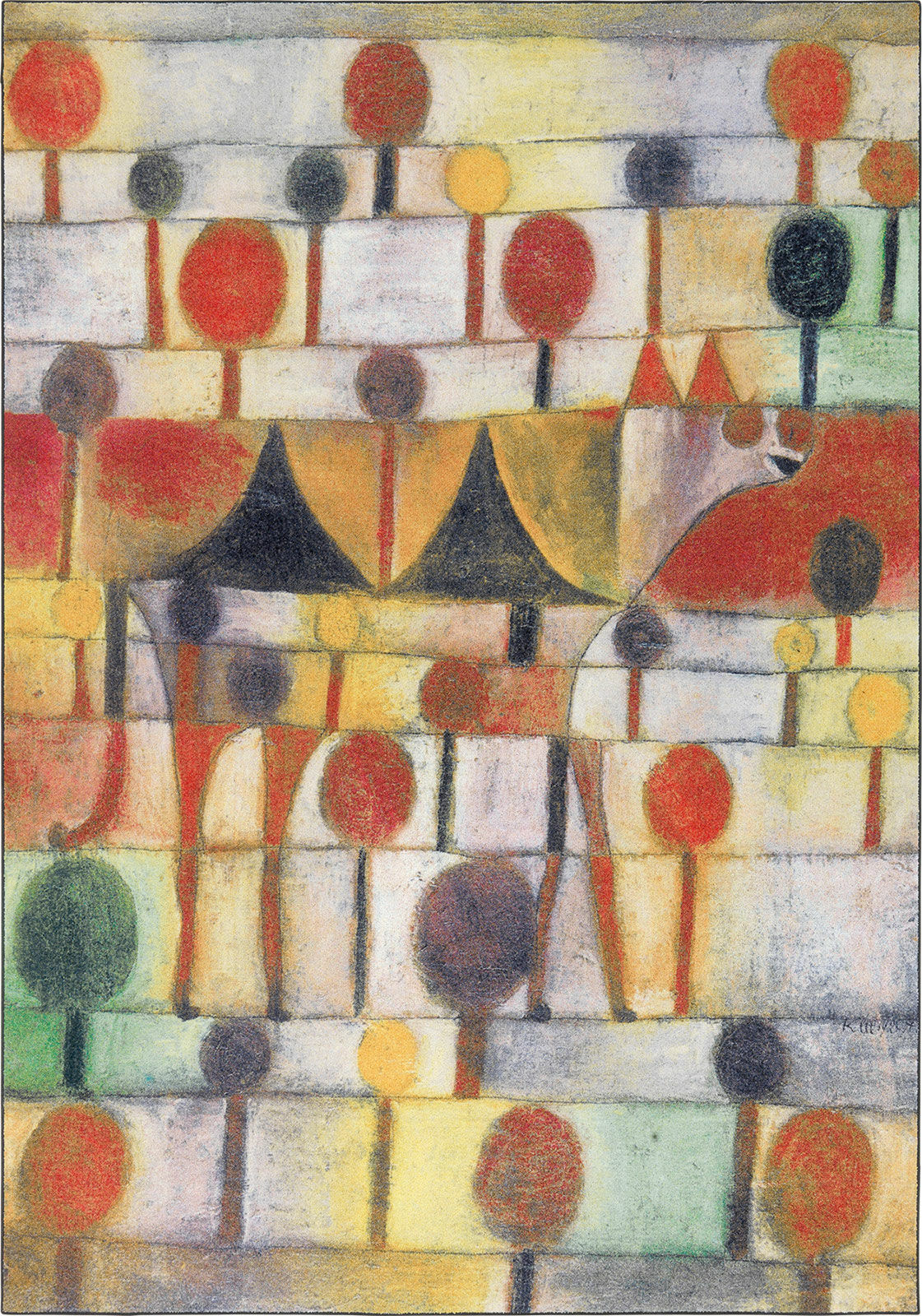Carpet "Camel in Rhythmic Tree Landscape" (230 x 160 cm)
Carpet "Camel in Rhythmic Tree Landscape" (230 x 160 cm)
Quick info
synthetic fibre + felt | size 230 x 160 cm (l/w) | suitable for underfloor heating
Detailed description
Carpet "Camel in Rhythmic Tree Landscape" (230 x 160 cm)
It is no coincidence that Klee's "Camel" is one of his major works. It is a perfect example of the originality of the artist, who went his very own way during a vibrant artistic era. The picture is not an alternative - it is everything. It is representational - the camel is clearly recognisable. It is abstract in the use of colour planes and the graphic elements of circles and lines. Although they can easily be understood as trees, they are also musical notation, showing the camel's swaying gait through a (his) score - a picture that can be seen and "heard".
One of Klee's most famous works adapted onto a tufted carpet made of high-quality synthetic fibre. Back made of felt with carpet binding tape. Carpet 100% polyamide, back and band 100% polyester. Suitable for underfloor heating. Size 230 x 160 cm (l/w).

About Paul Klee
He was called "the unique one" by his fellow artists: Paul Klee (1879-1940) shaped the understanding of modern art like hardly anyone else. With his mosaic-like composed works, he created a completely new style.
Born in Bern in 1879, Klee, a German-Swiss, turned out to be a double talent from an early age on: both his drawing skills and his violin skills promised him a musical as well as an artistic career. Klee decided on art and went to the Munich Art Academy, where he studied as a student of Franz von Stuck, among others. But it was not so much his academic studies that helped him develop an independent style but rather an extended study trip to Italy with his artist friends. Subtle symbolic depictions full of wit and humour became his trademark. Usually, just small formats and often merely drawings, enchant the viewer.
In 1906 Klee married the pianist Lily Stumpf and they had a son, Felix. The young family lived a very secluded life in Munich. It was only through the draughtsman Alfred Kubin that Klee became acquainted with the group known as the "Blaue Reiter". Klee quickly became friends with Kandinsky and Marc, with whom he shared the conviction that artistic creation was of spiritual nature.
A trip to the North African city of Tunis in 1914 with his painter friends August Macke and Louis Moilliet helped Klee to find new joy in colour and a genuine creative frenzy. "Color possesses me. I don't have to pursue it. It will possess me always, I know it. That is the meaning of this happy hour: Color and I are one. I am a painter." he writes in his diary. This was followed by countless watercolour paintings, with which he developed his own unique style.
Exhibitions organized by the Blaue Reiter made Klee famous. By the time he is appointed as a "master" by the Bauhaus, he already was a celebrated artist. In 1933, the National Socialist campaign against "degenerate art" forced Klee to leave Germany and settle back in Switzerland. With a true work mania, he tried to rebel against an incurable illness that conquers the painter, who is now internationally famous, only a few years later (1940).
Collective term for the painters and sculptors of the 20th century, such as Pablo Picasso, Salvador Dalí, Joan Miró, Marc Chagall and others, whose works are the most recognized in our times.


